** This is a lengthy post with lots of pictures which are clickable to view full size. Following the included steps should take approximately 30 minutes, but well worth it! Your CPU must have virtualization support, which most newer CPU’s do but it may have to be enabled in your BIOS! Virtualization can be checked using the free version of SIW Home. **
As a Daves Computer Tips reader I know you’re chomping at the bit to have a look at the Windows 8 Consumer Preview! The question becomes how are you going to install it? Do you have an unused machine? Do you install it in a dual boot configuration? Neither of these options are ideal. The former requires an extra computer and the later could lead to possible boot problems down the road for the novice user.
 What I use (and recommend) is the use of a virtual machine, which allows you to install other operating systems within your present OS. I use multiple VM’s (virtual machines) here at DCT for testing operating systems, creating screenshots, comparing features, and answering visitor questions. Virtual Machines allow me to accomplish all this with little fuss and without leaving my main computing platform. I can run Windows 7 and Windows Home Server, as an example, right alongside MS Outlook and Firefox – and switch seamlessly between them.
What I use (and recommend) is the use of a virtual machine, which allows you to install other operating systems within your present OS. I use multiple VM’s (virtual machines) here at DCT for testing operating systems, creating screenshots, comparing features, and answering visitor questions. Virtual Machines allow me to accomplish all this with little fuss and without leaving my main computing platform. I can run Windows 7 and Windows Home Server, as an example, right alongside MS Outlook and Firefox – and switch seamlessly between them.
Virtual machines are programs and any OS installed lives within that program so there is little chance it can affect the original operating system in a negative way. Close the virtual machine and everything is back to normal. Restart the virtual machine and it is as you left it.
Virtual Machine benefits:
- Generally easy to set-up
- Can install multiple operating systems on one computer
- No multi-boot issues
- Can open, interact with, and view multiple operating systems at the same time
- Easy to remove without affecting the host (original) operating system
- It’s fun
There are many different virtual machine host software packages available. I’ve used most and always come back to VirtualBox. It’s free, easy to use, and I’ll use it in this tutorial!
Let’s get everything together!
First you should download and install VirtualBox from the VirtualBox download page. Windows users will need the download labelled VirtualBox 4.1.8 for Windows hosts x86/amd64.
Next you need to download the Windows 8 Consumer Preview ISO from the Windows 8 Download page. I suggest downloading the 64-bit version in your language.
Finally you need to download and install ImgBurn so we can burn the Windows 8 ISO file to a blank DVD.
Additionally you need the license key for Windows 8: NF32V-Q9P3W-7DR7Y-JGWRW-JFCK8 and a blank DVD.
Burning the Windows 8 ISO to DVD with ImgBurn
Insert a blank (writable) DVD into your DVD burner and open ImgBurn. Select Write File to Disc from the available options.
Select the Windows 8 ISO you just downloaded at the top, choose your DVD burner in the middle (if you have more than one), and finally click the burn icon at the bottom.
The burning will begin. This will take a few minutes.
Success!
Be sure to leave the DVD in the drive while we complete the next step!
How to Configure VirtualBox for Windows 8
Now that you’ve burnt the ISO image to DVD leave it in the DVD drive and open VirtualBox.
Your screen will look slightly different as I have several virtual machines already installed. Click the New icon at top left.
This will open the New Virtual Machine Wizard. Simply click Next to begin the wizard.
In the first box enter a name for the virtual machine. I suggest “Windows 8 Consumer Preview” so there is no confusion later should you use VirtualBox for other operating systems. Next select the version of Windows the virtual machine will host – Windows 8 64-bit in this case – followed by clicking Next.
The next screen allows you to determine the amount of RAM available to the virtual machine. I suggest trying 2GB, or 2048MB. Simple move the slider to the right until 2048 displays in the box and click Next.
In the following window you will be creating a virtual hard drive for your virtual operating system to use. 20GB is more than sufficient for our purpose. Be sure that Start-up Disk and Create new hard disk are both selected. This will create a virtual hard drive with the same name you gave to the virtual machine earlier. Click Next to proceed.
The next screen allows you to change the type of virtual disk create. The default is VDI, which is fine for our purposes, so just click Next to continue.
The next option is whether the size of the disk should be fixed or dynamic. Choosing Fixed will create a file (virtual disk) that is 20GB. Choosing Dynamic will create a much smaller file that can grow (should the need arise), yet the size will appear as a full 20GB to the operating system. We want Dynamic, so click it if not already selected and then click Next.
The following window shows a summary of our disk settings and should be correct based on our previous choices, but now is the time to make any corrections. Click Next.
Finally! Click Create to allow VirtualBox to create the virtual disk.
One final summary before the virtual machine is create. Click Create.
In just a few moments you’ll be taken back to the VirtualBox dashboard where you will now see your new virtual machine listed in all its’ glory! Highlight the virtual machine (if it isn’t) and click Settings so we can tie up a few loose ends.
In the settings window that opens select Display in the left column. This is where we adjust the amount of memory given to the virtual display adapter. The default is 27MB, but 64MB is a reasonable setting to ensure we experience Windows 8 in full glory! Move the slider to the right until the result is 64MB in the box. Click OK to close the window and return to the dashboard.
How to Install Windows 8 in VirtualBox
Congratulations! You’ve just created your first virtual machine! Now, sit back and relax as the fun begins!
To install Windows 8 simply highlight the virtual machine in the left column and click Start at the top of the dashboard.
You will be presented with a First Run Wizard to guide you though the process of choosing the location of the installation media (the DVD you created earlier that should be in your DVD drive). Click Next to begin the wizard.
Now choose the drive letter where the Windows 8 DVD is located and click Next.
You’ll receive another summary screen. Click Start to begin the installation.
At this point you will see a new window open as the virtual machine starts. The new window will look as if another computer is running on your monitor because it is! The virtual machine will boot from the DVD drive you specified and begin the Windows 8 installation process.

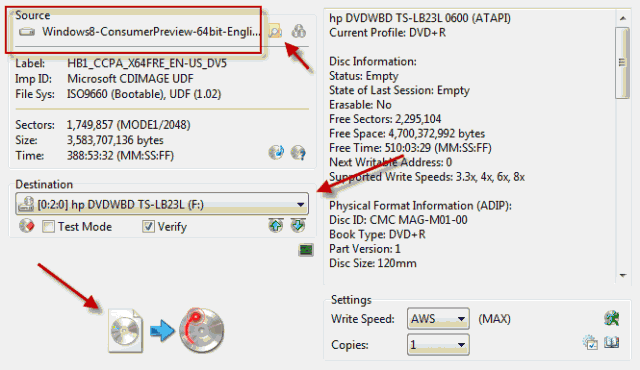

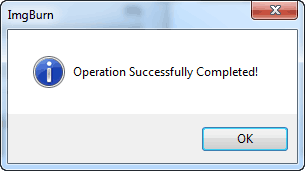


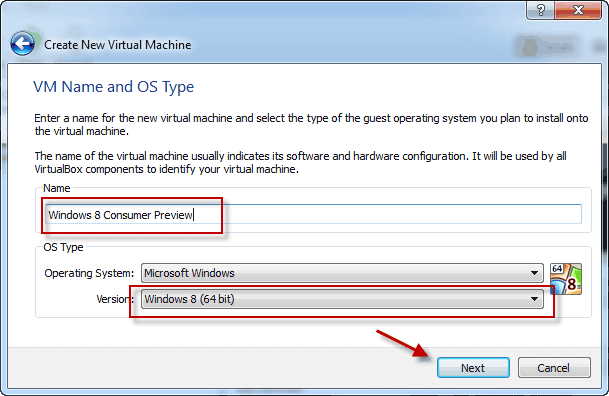
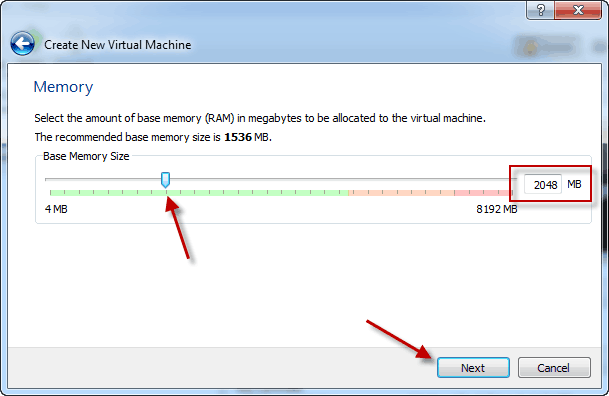

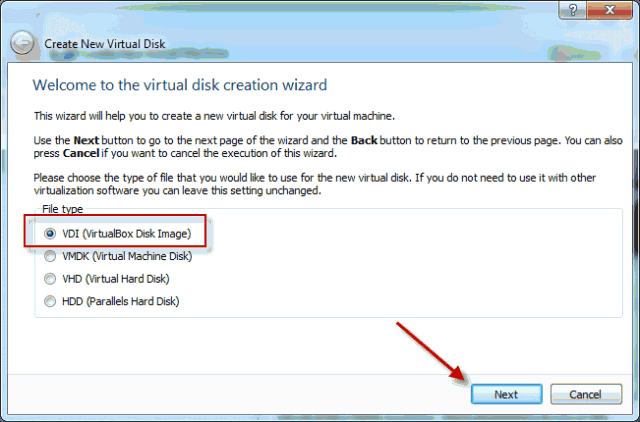
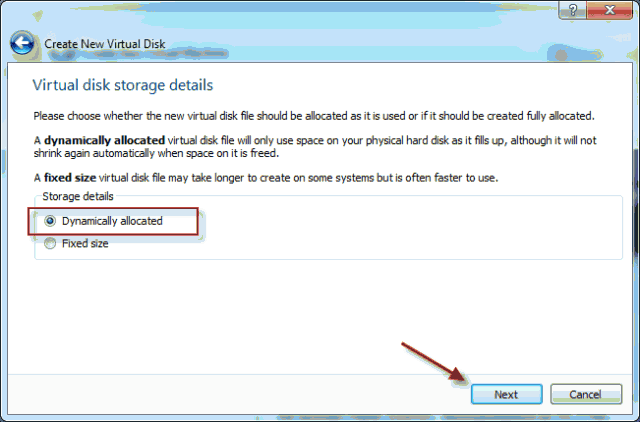

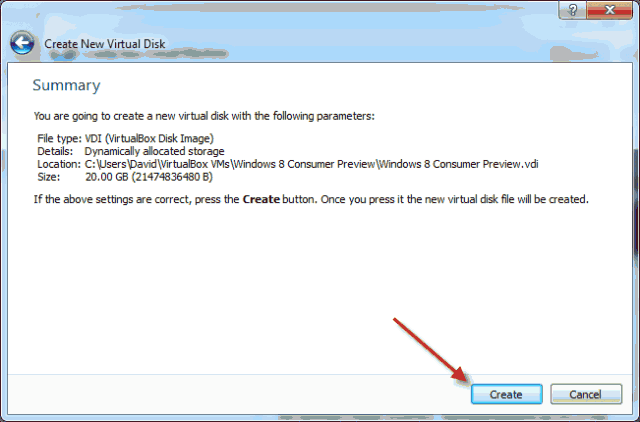

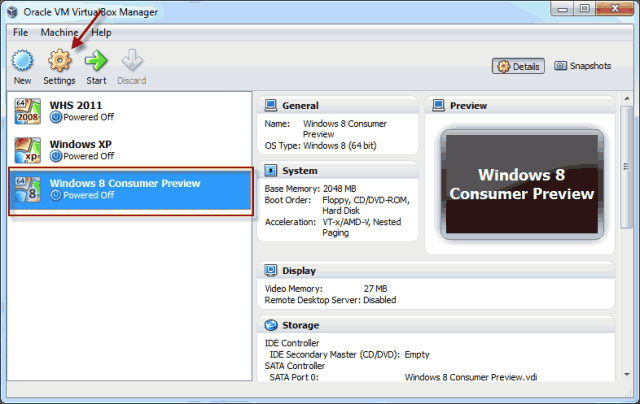
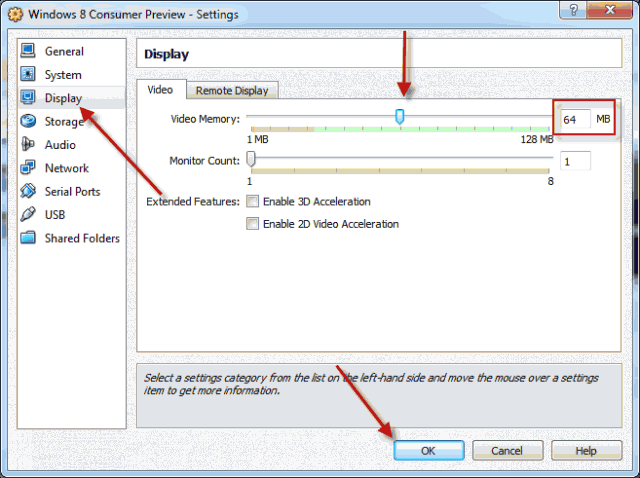
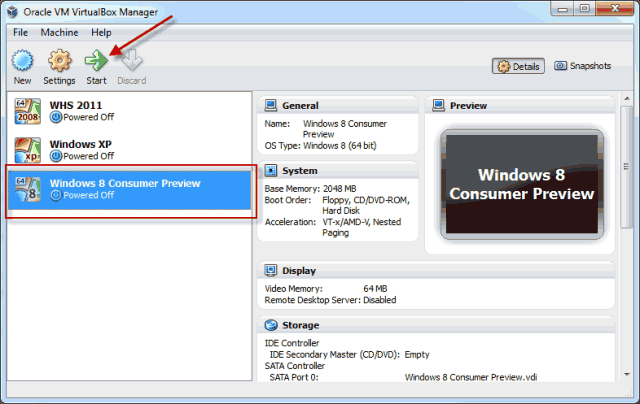
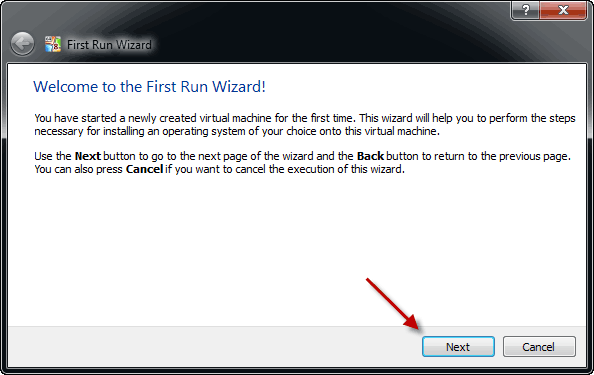


Wow Dave, great job with this post. I stayed home sick today, so I think I might just have to follow this step-by-step guide to get Windows 8 running on a vitrualbox in my machine.
Also, I’m so excited that you got this post up that I think I’ll spread the word to my twitter, Facebook, and Google+ so others can get windows 8 running too!
Thanks, Patrick! I did it just for you. 🙂
Hey Dave, that second link to “VirtualBox 4.1.8 for Windows hosts x86/amd64.” is going some place unexpected.
Good catch, Ron. Link is fixed!
Dave, good article, but I think you left out a restriction.
I am a VirtualBox 4.1.8 user, very happy with it, run Ubuntu and XP under it, but Windows 8 will not install, either the 64-bit or the 32-bit version. I have an HP Intel Core 2 Duo laptop about 2 1/2 years old with Windows 7, works great with 7. And Microsoft is touting that if 7 will run, so will 8. Bull!.
Windows 8 64-bit: Install fails, says my PC needs to be repaired, no other explanation. From reading the VirtualBox manual carefully it seems to say that VirtualBox requires the Intel or AMD virtualization hardware that my Core 2 Duo processor does not have. So the install fails.
Windows 8 32-bit: When I try to install this version, the install again fails, this time saying my PC needs to be repaired with an error code that ends in 260. I have no idea what it is looking for this time, maybe still the virtualization hardware?
Do you have any clues, am I right, or do I have some other issue?
By the way, it is not necessary to copy the ISO to a real DVD, you can easily mount an ISO to a virtual DVD reader in VritualBox and avoid that step if you want. I wanted the actual DVDs so I did make them, but I also tried installing directly from the ISO and it worked (actually didn’t work!) exactly the same from the real DVD or the virtual DVD.
Justin
Justin,
You didn’t mention which C2D CPU you have, but check your BIOS for visualization settings.
Dave,
Sorry, it is a T6600, which does not have virtualization capability according to Intel’s website. I found another site with some installation instructions that was pretty specific in stating that hardware virtualization support was required under VirtualBox for Windows 8; that is a big disappointment to me because I have not seen that stated anywhere else. Guess I am just out of luck, I am not buying a new laptop just for Windows 8 under VirtualBox 🙂
You might want to add to your description of installing Windows 8 under VirtualBox that processor virtualization hardware support is required .
Thanks,
Justin
Justin,
If you want to play around there are several options:
1. Try Win 8 32-bit.
2. Give MS Virtual PC a try – http://www.microsoft.com/windows/virtual-pc/
3. Give VMWare 4 a try – http://www.vmware.com/products/player/faqs.html
I would be very interested in hearing your experiences – if you find one that works without CPU virtualization support that could help quite a few others!
Dave,
First of all, I appreciate your following up on this. Unfortunately I think I am out of luck for sure with the 64-bit version, and who knows with the 32-bit versions.
1. Already tried Windows 8 32-bit in VirtualBox, as I said in my original note: “Windows 8 32-bit: When I try to install this version, the install again fails, this time saying my PC needs to be repaired with an error code that ends in 260. I have no idea what it is looking for this time, maybe still the virtualization hardware?”
2. MS Virtual PC: I have Windows 7 Home Premium, according to MS website it won’t run on that version, requires Professional or Ultimate.
3. VMWare Reader 4: According to the VMWare website, virtualization hardware is required for a 64-bit guest.
If I can’t get the 32-bit version of Windows 8 working under VirtualBox (any ideas?) I will try VMWare to see if I can get it to work there.
Frustrating, I just want to play around…..Justin
Hi Dave,
Thanks for your suggestion for VMWare, I have made some good progress.
VMWare also requires hardware virtualization for 64-bit guests, but it does not for 32-bit guests. So I installed VMware and tried to install Windows 8. I had lots of trouble, I told VMWare that it was Windows 7 and VMWare kept trying to do an automatic Windows install, time after time. Finally I changed the operating system to Other and said I would install later. That worked, Windows 8 installed and I was able to access it. BUT it would not talk to the internet no matter what I tried. I finally went to the VMWare forums and found that I needed to change the operating system definition to Windows 7, and bingo, it connected. Apparently the correct way to install Windows 8 32-bit under VMWare is to define a Windows 7 guest, but say you will install it later to bypass the automatic install that VMWare wants to do.
Anyway, I now have a Windows 8 guest that runs. Now if I can just figure out how to work with it, and maybe figure out why I would even want it 🙁 I really have to say that Windows 7 is looking really, really good to me right now!
I very much appreciate your help and direction. And if you or anybody else here does come up with any ides on how to get Windows 8 32-bit installed under VirtualBox without any virtualization hardware, I would love to know it. After my limited experience with VMWare I really prefer VirtualBox and would certainly like to install and run it there.
Justin
Dave,
I hope I don’t have the same problem as Juntin.
Right at the end of the installation of W8 I got this notice:
VT-x/AMD-V hardware acceleration is not available on your system.
Certain guests (e.g.OS/2 and QNX) require this feature and will fail to boot without it.
I am not sure what to do next and if anything can be done to complete the W8 install.
I have only basic to intermediate level expertise and this is beyond my understanding.
I would like to know if my system will not be able to install W8 or if there is a work-a-round.
Using SIW.exe I found this info that seems to tell the story:
Operating System Windows 7 (Home Premium) x64 Service Pack 1
CPU Type 2x Intel Pentium III Xeon, 2333 MHz
CPU Name Intel(R) Core(TM)2 Quad CPU Q8200 @ 2.33GHz
Vendor GenuineIntel
Virtual Technology Supported No
Hyper Threading Supported No
Any clarification would be appreciated.
As usual, thanks for the great articles.
brian
Brian,
That CPU definitely doesn’t support Intel’s VT spec. You might give the 32-bit version of Win 8 a shot as some have been able to get 32-bit virtual machines running without VT.
I have an Intel T6400 Core2Duo processor which doesn’t support the VT spec and neither 64bit or 32bit installs. I tried Microsoft Virtual PC also but can’t figure out how to create a VM with it. I also tried putting it on a external USB Hard Drive but it won’t install to a HD connected through USB.
David,
Should be a Create Virtual Machine button at the top (if I remember correctly). The steps should be similar but with slight wording differences.
Dave,
Thanks so much for the help.
Now I won’t have to spend time trying to make some think work, that will neve work!
I will try installing the 32 bit version as you suggested and maybe I can try Win8.
Thanks again,
Brian
Dave –
Thanks for your detailed instructions. I have some experience with VM but I was getting into deep holes with Win 8 64 bit – your help was exactly what I needed, Thanks again!!
Hi,
I run VirtualBox 4.1.8 on a Macbook dated 2005, with 2GB RAM, and experienced the same problem as Justin; starting Win8 ended with error code 260.
Poking around with the advanced settings in VirtualBox, under System -> Processor, I found that enabling PAE/NX had a positive effect 🙂
Turning Acceleration off & on also had impact for a successful installation…
I now have a working installation of 32-bit Win8 with hardware Virtualization enabled – it´s not fast, but it´s working 🙂
Thanks to Dave for an excellent guide!
Cheers, Rune
Yes, this did the trick! Enabling PAE/NX solved my problem 🙂
yeah might try this instead…….trying installing straight of the DVD i burned from ISO and its starts to install good, then gets to 32% and stays there forever, then comes back and say windows 8 failed to install……..maybe the virtualbox will install it all the way
Do you know if its possible to run win8 on a nested VBOX?